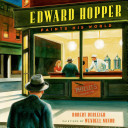2018 School Spending Survey Report
Edward Hopper Paints His World
illus. by Wendell Minor. 40p. chron. illus. notes. Holt. Aug. 2014. Tr $17.99. ISBN 9780805087529.
COPY ISBN
In a narrative as calmly straightforward as Hopper's work, Burleigh introduces the great American realist. Burleigh's prose captures the essence of Hopper's renderings: lighthouses that "rise up, gleaming in the sunlight, looming above land and sea"; the many "small mysteries" of city life. So, too, do Minor's gouache paintings, all of which echo Hopper's sense of wonderment about the potential of everyday scenes. Websites. Bib.
In a narrative as calmly straightforward as Hopper's work, Burleigh introduces the great American realist (1882-1967), who from boyhood dreamed of being an artist but wondered: "Will I ever be able to paint things the way they appear to me?" With occasional quotes smoothly worked in, the text takes readers through Hopper's early years studying in New York and Paris, working as an illustrator, and pushing on with his own art as "America was changing" in the early twentieth century. Then, after Hopper's marriage at forty-two, the story tracks his travels with his wife along New England's seashore, through the countryside, and back to his beloved New York City, where "he was looking for what other artists didn't paint...what only he saw." Burleigh's prose captures the essence of Hopper's renderings: lighthouses that "rise up, gleaming in the sunlight, looming above land and sea"; the "quiet emptiness" of a gas station; the many "small mysteries" of city life. So, too, do Minor's gouache paintings, all of which echo Hopper's sense of wonderment over the potential of everyday scenes (four of Minor's illustrations are his "interpretations" of Hopper paintings--Early Sunday Morning, Lighthouse Hill, Gas, and Nighthawks). An afterword describes Hopper as a "hero" who believed in his own vision and an "explorer" who discovered a unique brand of realism amidst modern artists venturing away from it. Other back matter includes Hopper quotes and thumbnails of his work, an extensive list of resources, and an artist's note. katrina hedeen
ALREADY A SUBSCRIBER? LOG IN
We are currently offering this content for free. Sign up now to activate your personal profile, where you can save articles for future viewing





Be the first reader to comment.
Comment Policy:
Comment should not be empty !!!